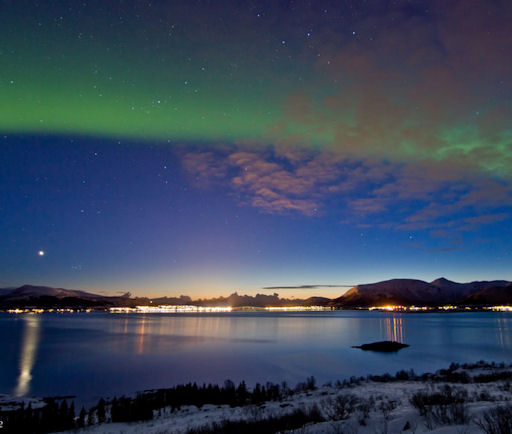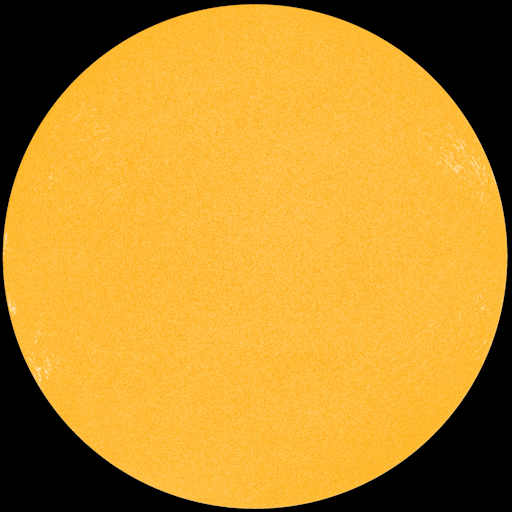STORM CLOUD MISSES EARTH: A coronal mass ejection (CME) expected to hit Earth's magnetic field on April 9th seems to have missed. No signatures of an impact are evident in solar wind data. NOAA has downgraded the odds of a geomagnetic storm today to no more than 10%.
LAST AURORAS OF THE ARCTIC SEASON? These days, whenever Arctic sky watchers see the aurora borealis, they inevitably wonder if that was it--the last display until autumn. Spring has sprung and soon the midnight sun will overwhelm the Northern Lights. This photo taken April 9th in Blokken, Norway, illustrates the problem:
"At midnight there was lots of light from the sunset," says photographer Frank Olsen. "And just an hour after this, the sunrise made the the horizon quite bright. These are probably our last auroras this season."
Famous last words? An incoming solar wind stream could trigger one more display this week before the midnight sun takes over. Aurora alerts: text, phone.
more images: from Ole C. Salomonsen of Tromsø, Norway; from Anne Fyhn of Grøtfjord, Tromsø, Norway; from Harald Albrigtsen of Grøtfjorden, Norway; from Sylvain Serre of Ivujivik, Nunavik, Quebec, Canada; from Yuichi Takasaka of Prelude Lake, Northwest Territories, Canada; from Göran Strand of Rörvattnet, Sweden;
ALMOST-BLANK SUN: In case you needed a reminder that this solar cycle is the weakest in decades, take a look at the solar disk. Today it's almost blank:
Only last month, solar activity reached a fever pitch with one sunspot alone dumping enough energy in Earth's atmosphere to power every residence in New York City for two years. Such outbursts are consistent with predictions that solar maximum is only about one year away. Yet even on the threshold of Solar Max, the sun remains capable of deep quiet. Stay tuned for more ups and downs.

![]()
Solar wind
speed: 357.0 km/sec
density: 12.4 protons/cm3
explanation | more data
Updated: Today at 1605 UT
![]()
X-ray Solar Flares
6-hr max: B6 1137 UT Apr10
24-hr: B6 1137 UT Apr10
explanation | more data
Updated: Today at: 1600 UT
![]()
![]()
![]()
Daily Sun: 10 Apr 12
![]()
![]()
The sun is almost blank--no sunspots. Solar activity is low. Credit: SDO/HMI
![]()
![]()
![]()
Sunspot number: 24
What is the sunspot number?
Updated 09 Apr 2012
Spotless Days
Current Stretch: 0 days
2012 total: 0 days (0%)
2011 total: 2 days (<1%)
2010 total: 51 days (14%)
2009 total: 260 days (71%)
Since 2004: 821 days
Typical Solar Min: 486 days
Updated 09 Apr 2012
The Radio Sun
10.7 cm flux: 95 sfu
explanation | more data
Updated 09 Apr 2012
![]()
![]()
![]()
Current Auroral Oval:
![]()
Switch to: Europe, USA, New Zealand, Antarctica
Credit: NOAA/POES
![]()
![]()
![]()
Planetary K-index
Now: Kp= 1 quiet
24-hr max: Kp= 3 quiet
explanation | more data
![]()
Interplanetary Mag. Field
Btotal: 5.2 nT
Bz: 2.8 nT north
explanation | more data
Updated: Today at 1607 UT
![]()
![]()
![]()
Coronal Holes: 10 Apr 12
![]()
![]()
Solar wind flowing from this coronal hole should reach Earth on April 13-14. Credit: SDO/AIA.






